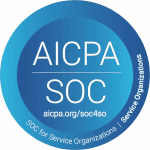A New Best Practice: How RPA Will Revolutionize Your Revenue Cycle Management
If you follow technology advances in healthcare administration, you’ve probably read about Robotic Process Automation, or RPA, and how it’s revolutionizing revenue cycle management. Because RPA is viewed as ‘new,’ it’s often marketed as a separate technology, an add-on so to speak. However, a few billing and management solutions, such as PhyGeneSys, have always offered RPA as an integral feature of the broader practice management system. Said another way, RPA is in our DNA.
RPA deploys AI ‘bots’ to pull in the information required for an advanced patient experience and a highly automated revenue cycle. RPA leverages the synergic interoperability of electronic medical records, medical imaging systems, patient portals, and external data sources, such as insurance databases and government health registries. Any information that is not yet digitized, including new patient intake forms, is converted by optical character recognition (OCR). By accessing these systems, RPA can automate tasks such as patient registration, appointment scheduling, insurance verification, coding, billing, and claims submission with remarkable speed and accuracy.
In addition to improving operational efficiency, RPA can help medical practices comply with regulatory requirements while maintaining data privacy and security. Your PhyGeneSys RPA can be programmed to follow strict rules and protocols for data handling, ensuring that sensitive patient information is protected at all times.
Addressing Coder Shortage and Burnout
A survey by the American Health Information Management Association (AHIMA) found that 40% of medical coding professionals reported experiencing burnout, with 25% reporting that they were actively seeking new employment as a result. AHIMA also found that 50% of respondents reported difficulty in filling coding positions due to a shortage of qualified candidates. What’s more, a recent Accenturestudy projected that the shortage of medical coders would reach 32% by 2025, with demand for coders outpacing supply.
Yet despite these findings and their own experience, practice managers are sometimes reluctant to explore RPA for fear of displacing long-time employees. This is a management choice, certainly. Yet implementing RPA is an excellent strategy to reduce workload and improve work-life balance for medical coders. By using RPA, medical practices can improve their operations’ efficiency and accuracy while freeing up staff to focus on higher-value tasks that require human expertise and decision-making.
Evidence-Based Outcomes
Many healthcare organizations are well on their way to implementing RPA, and one must look at the momentum. Grand View Research projected that the global healthcare RPA market would continue to grow at a CAGR of 29.6%, driven by the need for cost-effective and efficient healthcare operations. In addition, the report highlighted that RPA could help healthcare organizations to automate administrative and repetitive tasks, reduce errors, and improve patient outcomes.
A study published in the Journal of Medical Systems found that RPA reduced the time required to process insurance claims by 55%, resulting in a 25% reduction in overall claim processing costs.
The list goes on. A case study by Automation Anywhere found that a healthcare provider in the United States was able to process 900% more patient referrals per week after implementing RPA, resulting in a 73% reduction in referral processing time and an estimated annual cost savings of $400,000.
And Return On Investment?
Surveying a number of industries, Forrester Consulting found that RPA reduced processing times by 40% to 70% and improved accuracy rates by 95% to 100%. The study also found that organizations implementing RPA saw an average ROI of 186% over three years. In addition, Deloitte found that RPA can provide a return on investment of 300% to 800% within the first year of implementation, depending on the complexity of the automated processes.
Specific to healthcare, RPA can be used to maintain EHR, automating tasks such as data entry, record updates, and patient matching, reducing the need for manual labor and minimizing errors. According to a study by Black Book Market Research, RPA can reduce EHR-related labor costs by up to 70%.
The Journal of Medical Systems reported that an RPA system implemented in a healthcare organization reduced the time required for administrative tasks such as patient registration and appointment scheduling by 90%. This resulted in improved patient satisfaction and a significant reduction in labor costs.
And revenue leakage? RPA accurately captures and bills for services rendered, reducing the risk of lost revenue. According to a study by HFS Research, RPA can reduce revenue leakage by up to 50%, resulting in significant financial benefits for a healthcare organization.
One Final Thought
Implementing RPA might seem a bit intimidating to practice managers, especially those who work with a complex network of data sources. That’s why it’s important, if not imperative, that the firm hired for RPA implementation has expertise in medical revenue cycle management as well as RPA technology. Look for those with domain expertise in CPT, ICD, and HCPCS codes, Medicare and Medicaid. Toward that end, the PHIMED team offers years of expertise that can be invaluable to your RPA implementation and rapid ROI.
For additional information on PhyGeneSys and PHIMED, call 800-909-7240 or email info@phimed.com.









